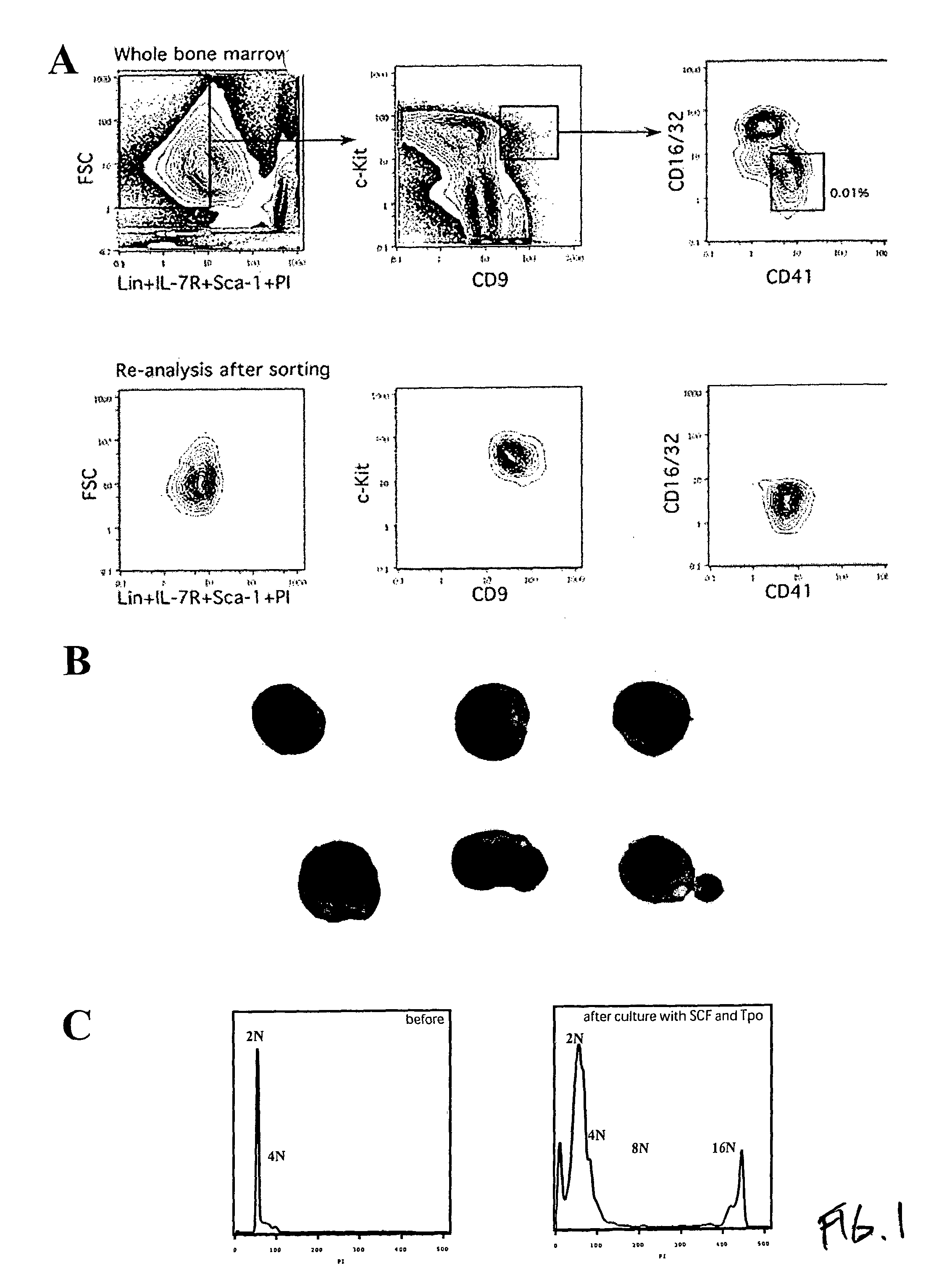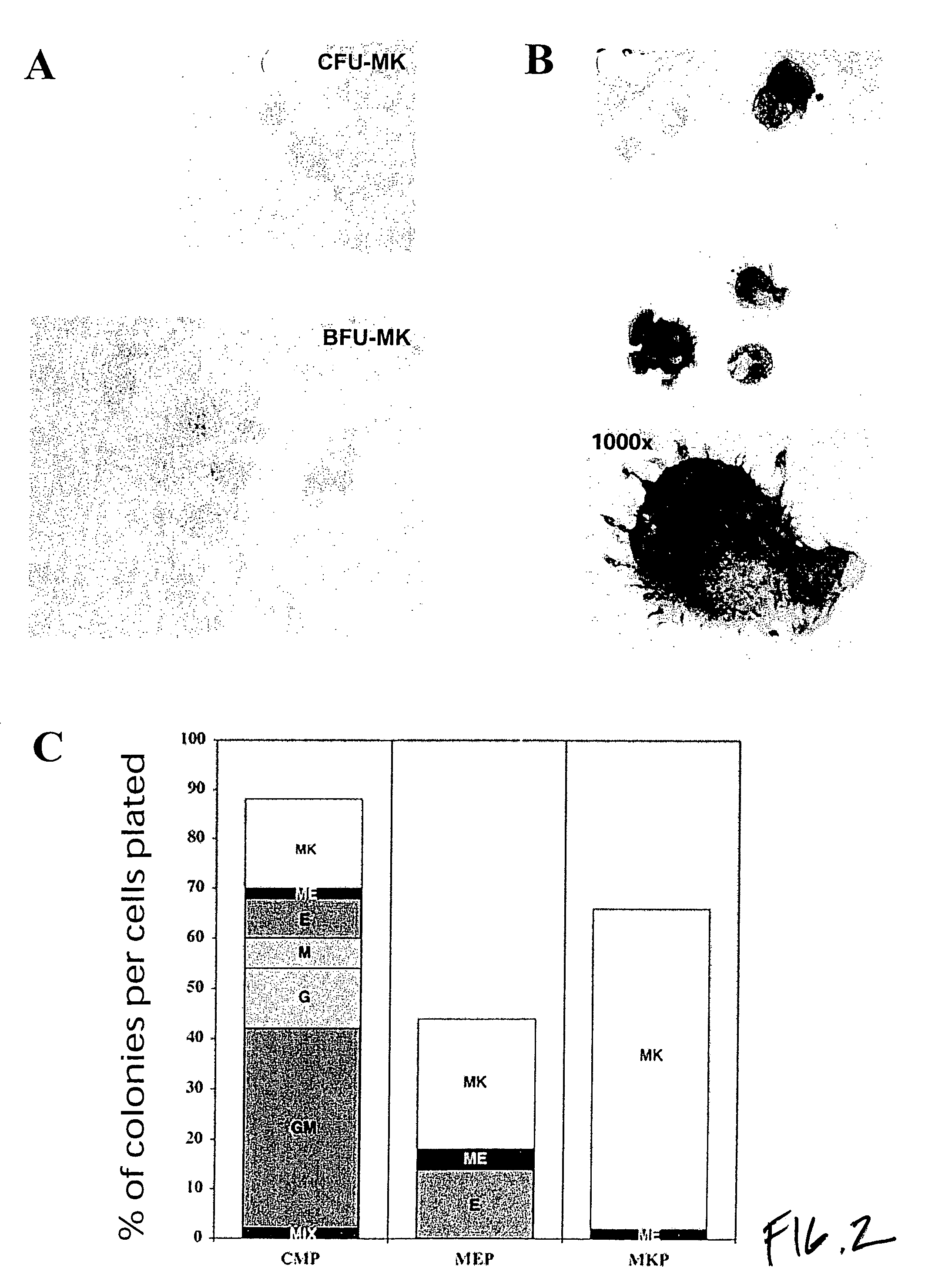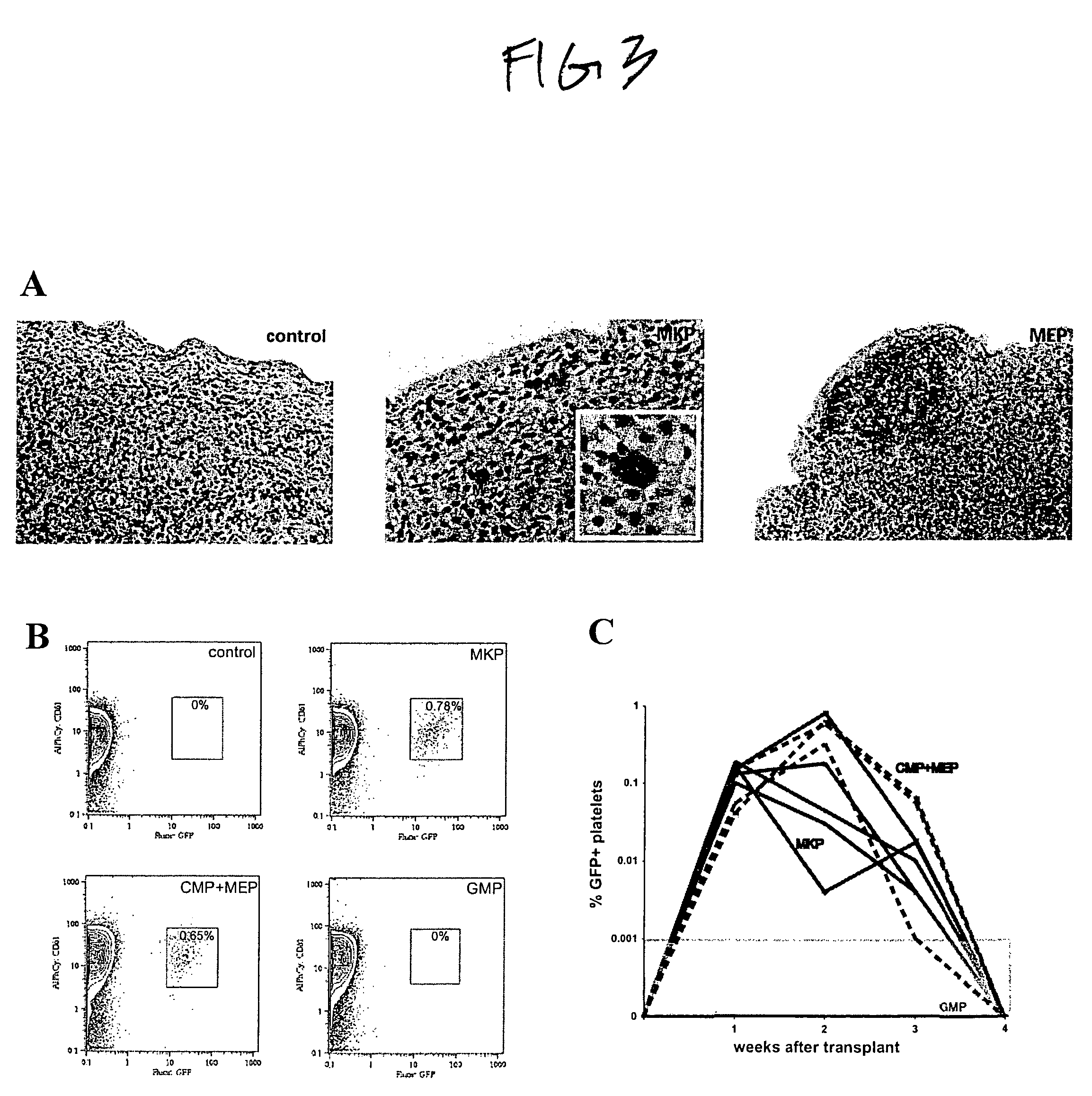Mammalian megakaryocyte progenitor cell
- Summary
- Abstract
- Description
- Claims
- Application Information
AI Technical Summary
Benefits of technology
Problems solved by technology
Method used
Image
Examples
example 1
Materials and Methods
[0071]Mouse strains. Six- to 8-week-old C57BI / Ka-Thy1.1 mice were used for the isolation of megakaryocyte progenitors (MKPs) and other myeloid progenitors. Competitive repopulation and spleen colony-forming unit (CFU-S) assays were done in the congenic Ly5 antigen system (Ly5.1 vs. Ly5.2) as described by Na Nakorn et al. (2002) J. Clin. Invest. 109:1579-1585. β-actin green fluorescent protein (GFP) transgenic mice were generated in our laboratory (Wright et al. (2001) Blood 97, 2278-2285) and have been back-crossed to C57BI / Ka-Thy1.1 mice for at least 5 generations. All animals were maintained on acidified water (pH 2.5) in the Stanford University Laboratory Animal Facility in accordance with Stanford guidelines.
[0072]Cell staining and sorting. Myeloid progenitor cells (CMPs, MEPs and GMPs) were isolated using the staining protocol described previously by Akashi et al. (2000) Nature 404, 193-197. For the isolation of MKPs, bone marrow cells were stained with ant...
PUM
| Property | Measurement | Unit |
|---|---|---|
| temperature | aaaaa | aaaaa |
| temperature | aaaaa | aaaaa |
| pH | aaaaa | aaaaa |
Abstract
Description
Claims
Application Information
 Login to View More
Login to View More - R&D
- Intellectual Property
- Life Sciences
- Materials
- Tech Scout
- Unparalleled Data Quality
- Higher Quality Content
- 60% Fewer Hallucinations
Browse by: Latest US Patents, China's latest patents, Technical Efficacy Thesaurus, Application Domain, Technology Topic, Popular Technical Reports.
© 2025 PatSnap. All rights reserved.Legal|Privacy policy|Modern Slavery Act Transparency Statement|Sitemap|About US| Contact US: help@patsnap.com



